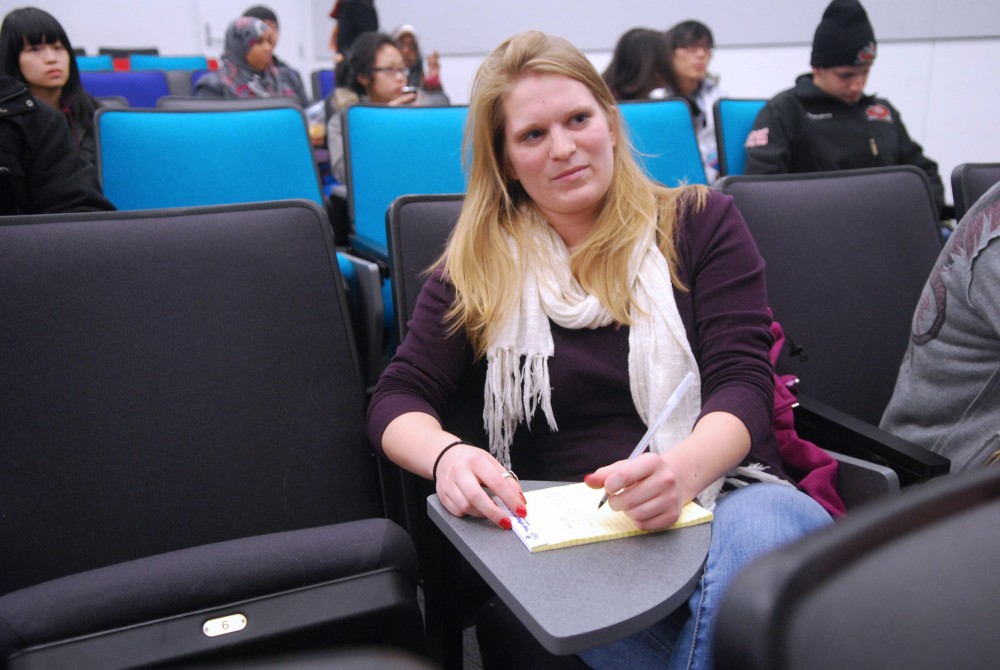Last year, Meghan Sherratt changed the way she did math homework because she was left-handed.
She said her homework confused the instructor, who didnâÄôt know how to grade the work.
âÄúShe wanted us to work right to left and I worked it left to right,âÄù Sherratt said. âÄúI didnâÄôt do as well because I had to change.âÄù
For many left-handed students, using spiral notebooks, a computer mouse on the right side of the keyboard and even whiteboards can prove challenging during a normal day at the University of Minnesota.
Most lefties said they donâÄôt let left-handedness become a problem, but itâÄôs still an inconvenience in some classes.
âÄúWhen I have to do something with markers I smear it because my hand goes straight across,âÄù Sherratt said. âÄúI have group projects where we write on whiteboards and I just donâÄôt do it.âÄù
According to the Office of Classroom Management, 10 percent of desks in each classroom must be left-handed when tables are not a possible setup.
Desks made for right-handers can make note-taking and exams uncomfortable for southpaws.
In large lecture halls, tablet desks are often used for efficiency. To accommodate for the 10 percent standard, all left-handed desks are placed on the left side of the auditorium.
âÄúThat tends to be the ideal spot with regards to interaction with other tablets,âÄù David Crane, operations manager for the Office of Classroom Management said. âÄúWe canâÄôt put two tablets next to each other because they wonâÄôt interact with one another.âÄù
But thatâÄôs not enough for many left-handed students who have to choose between sitting on the left side of the classroom or in a right-handed desk.
âÄúI sat on the left side when I first started [at the University] because I thought it would be easier and more convenient,âÄù Sherratt said. âÄúBut itâÄôs not because people are always climbing over you.âÄù
But the Office of Classroom Management tries to make it so lefties have options.
âÄúWe donâÄôt want to force people to sit in a certain area,âÄù Crane said. âÄúWe give them the choice to sit in the front of the room or the back of the room.âÄù
Graduate students have problems of their own depending on their area of study. Surgeons often need to use right-handed tools like scissors, clamps and needle holders.
There are currently no surgical residents at the University who are left-handed said Cathy Larson, the surgical residency coordinator in the UniversityâÄôs Medical School. There have only been three lefties in the surgical residency program in the past seven years, Larson said.
The program doesnâÄôt provide accommodations for left-handed students âÄî they must adapt to the equipment.
School of Dentistry students have similar problems with their tools. Dentistry student Matt Priess said some of his equipment needs to be rearranged to be lefty-friendly.
Tubing is usually attached to the dentistâÄôs chair, left-handed dentists have to avoid letting the tube wrap around a patientâÄôs neck. Newer chairs are made for both right-handed and left-handed dentists.
Preiss said the School of Dentistry has accommodated for his left-handed needs.
âÄúI have actually been given my own operatory and chair,âÄù Priess said. âÄúThe right handed students have to move about [to a different operatory] day to day.âÄù


